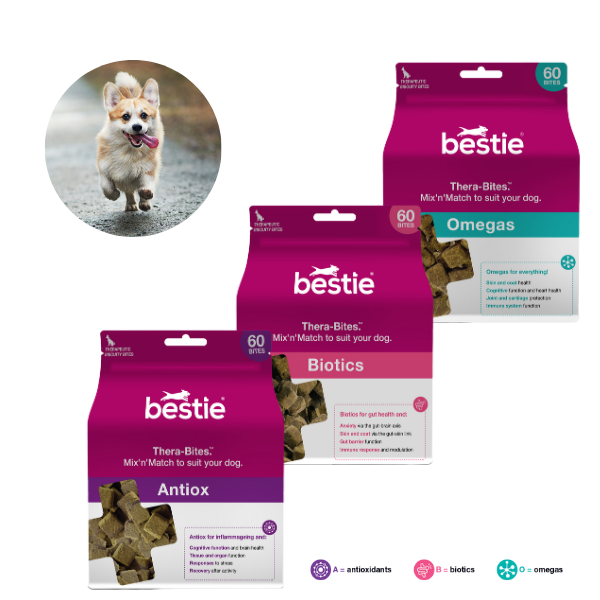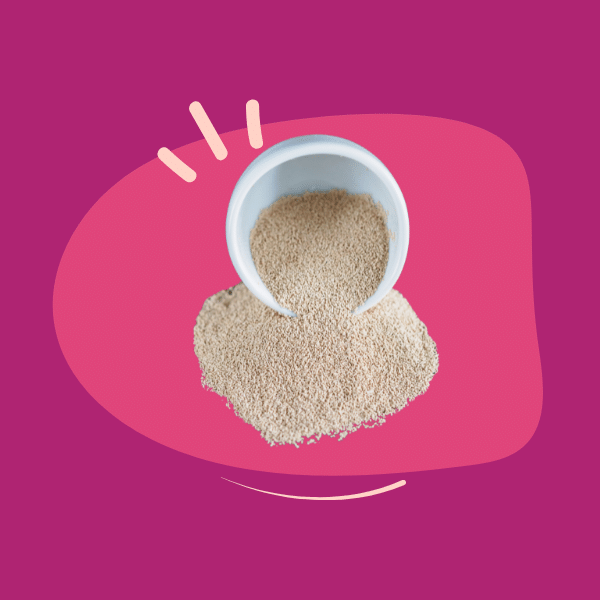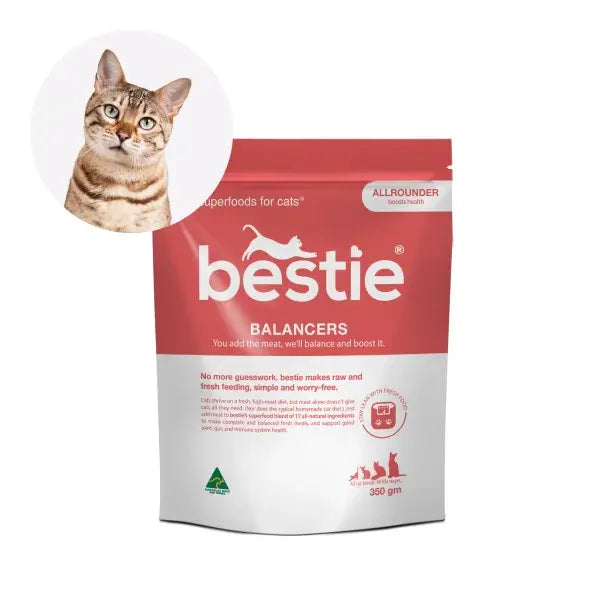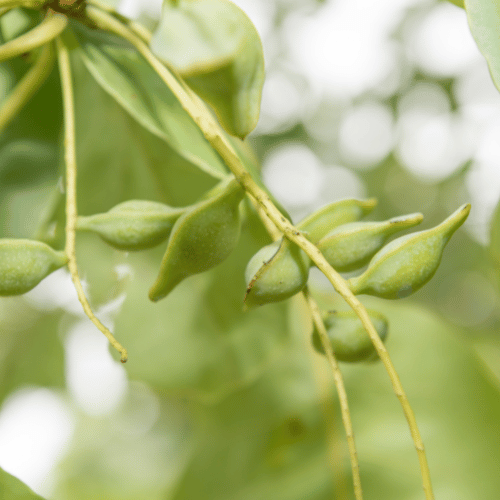The Kakadu Plum (Terminalia ferdinandiana)thrives in the open woodlands across Northern Australia, namely in the Kimberley region of Western Australia, the Northern Territory, and Queensland.1 This native Australian plant is commonly known as Kakadu Plum, Billy Goat Plum, Green Plum, Salty Plum, Wild Plum, Murunga, Marnybi, Manmohpan, Kullari Plum, Gubinge.2
Kakadu plum gained worldwide recognition when it was discovered that it is a fruit with the highest recorded levels of natural Vitamin C content in the world, measuring up to 7000 mg/100g DW, which is 100 times the Vitamin C content in oranges.2It contains 75 times more vitamin C than oranges and 900 times more ascorbic acid than blueberries.3
Its powerful antioxidant properties is a key reason why Kakadu Plum is an ingredient in our Allrounder Balancer for Dogs and Cats, and our Cod & Plum Superfood Oil Blend.
For millions of years, Kakadu Plum remains to be one of the staple foods of the northern Australian Indigenous people. The nutritional and therapeutic properties of Terminalia genus can be attributed to the presence of a wide range of phytochemicals, such as phenolic compounds, which encompasses phenolic acids, gallotannins, ellagitannins, proanthocyanidins, and other flavonoids.4
A number of research outcomes have been reported on the antioxidant, antibacterial, anti-inflammatory, anti-apoptotic, cytoprotective, and anticancer activities of T. ferdinandiana fruits and leaves.5
In order to capture its health properties, Kakadu plum is now used in many dietary supplements and health foods not only in humans but also for dogs and cats.
Table 1. Proximate Composition Of Kakadu Plum (T. ferdinandiana)Kernels
|
|
Per 100 gram |
|
Protein |
32.0 g |
|
Fat |
35.1 g |
|
Saturated Fat |
5.8 g |
|
Mono-unsaturated Fat |
9.8 g |
|
Polyunsaturated Fat |
19.4 g |
|
Dietary Fibre (Total) |
21.2 g |
|
Energy (kJ/100 g) |
24% |
|
Total Sugar (g/100 g) |
<1 g |
|
Sodium (mg/100 g) |
8.6 mg |
Source:Akter, S., Netzel, M. E., Fletcher, M. T., Tinggi, U., & Sultanbawa, Y. (2018). Chemical and Nutritional Composition of Terminalia ferdinandiana (Kakadu Plum) Kernels: A Novel Nutrition Source. Foods, 7(4). https://doi.org/10.3390/foods7040060
Kakadu Plum is rich in antioxidants
Antioxidants act by neutralizing the effects of chronic inflammation, which is a significant feature in a wide variety of important health issues that affect pets.
Supplementation with antioxidants may help protect and/or reduce the negative effects of inflammation that are present in cognitive dysfunction, cardiovascular disease, autoimmune diseases, cancer, and other diseases.
Antioxidants help neutralize unstable molecules called free radicals. Excess numbers of these molecules can harm a dog’s body and cause oxidative stress.6
The potent antioxidant activity of Kakadu Plum is attributed to vitamin C (L-ascorbic acid) and ellagic acid, phenolic acid, and flavonoids that are present in significant quantities in the fruit and leaves.3
- Vitamin C (ascorbic acid) is a powerful antioxidant that boosts the immune system, reduces oxidative stress, and may play a role in collagen synthesis, iron absorption, heart health, memory, and cognition. It may also help with hypertension and lower the risk of diseases that affect the heart and circulatory system.7,8,9
- Phytochemical analysis has revealed that T. ferdinandianafruit is a rich source of Ellagic acid and its hydrolysable tannins, ellagitannin.5
- Ellagic acid is known as an important natural phenolic antioxidant, that is widely found in different fruits and vegetables. It is a phytochemical which is is known for its nutritional and pharmacological potential as an antioxidant.
- Recent studies have shown that ellagic acid may trigger a spectrum of cell signalling pathways to attenuate or slow down the development of neurodegenerative disorders.10 This effect is also attributed to gallic acid in Kakadu Plum. Also, ellagic acid has been linked to numerous health benefits, including anticancer, anti-inflammatory, antimicrobial, and prebiotic effects.11
- Kakadu plum has five times higher antioxidant capability than the blueberry, which is renowned worldwide as the ‘health-promoting fruit’.1
- It contains 6 times the amount of polyphenols and 13.3 times more antioxidant activity than blueberries.12
Aside from vitamin C and ellagic acid, Kakadu Plum is also rich in other important antioxidants that include the following:
- Flavonols promote heart health and may possess cancer-fighting and antiviral properties. The major flavonols present in Kakadu Plum are quercetin and kaempferol.
- Anthocyanins in Kakadu Plum are responsible for the colour of the fruit and are known to support urinary tract health, improve eye health, a lower risk of some types of cancer, and improved memory.
- Lutein, a type of carotenoid, is also another antioxidant in the fruit that is associated with eye health.
Table 3.Total amount of vitamin C, phenolics, total flavonoids of KKD-NT and KKD-WA and other fruits.
|
Samples |
Vitamin C (L-Ascorbic Acid) |
Gallic Acid (mg/g DW) |
Ellagic Acid (mg/g DW) |
Daidzin (mg/g DW) |
Total Phenolics |
Total Flavonoids |
|
KKD-NT (Northern Territory) |
88.66 ± 2.92 |
3.67 ± 0.16 |
0.11 ± 0.02 |
0.05 ± 0.01 |
147.2 ± 0.70 |
1.30 ± 0.01 |
|
KKD-WA (Western Australia) |
52.83 ± 1.85 |
5.10 ± 0.03 |
0.36 ± 0.01 |
0.04 ± 0.00 |
115.2 ± 2.12 |
1.10 ± 0.02 |
|
Pomegranate |
T |
0.13 ± 0.00 |
0.01 ± 0.00 |
0.01 ± 0.00 |
16.66 ± 1.32 |
0.32 ± 0.02 |
|
Orange |
0.03 ± 0.00 |
T |
ND |
ND |
27.01 ± 1.14 |
0.94 ± 0.03 |
|
Lemon |
0.11 ± 0.00 |
T |
T |
ND |
19.52 ± 0.84 |
0.66 ± 0.01 |
|
Blueberry |
T |
T |
ND |
T |
21.96 ± 1.58 |
0.86 ± 0.06 |
|
Raspberry |
0.01 ± 0.00 |
T |
0.02 ± 0.00 |
T |
25.79 ± 2.47 |
0.63 ± 0.03 |
*mg GAE/g DW: mg gallic acid equivalents (mg GAE)/g dry weight (DW) of fruits; ** mg QE/g DW: mg quercetin equivalents (mg QE)/g dry weight (DW) of fruits. Source: https://www.mdpi.com/2076-3417/12/1/236
Phytochemicalsin Kakadu Plum
Extracts of Kakadu Plum have a wide range of phytochemicals, such as phenolic compounds and flavonoids, which includes gallotannins, ellagitannins, phenolic acids, proanthocyanidins, ellagic and gallic acid.
These phytochemicals contribute to the remarkable antioxidant potential of Kakadu Plum as well as the plant's pharmacological activities against cancer, rheumatoid arthritis, inflammation, bacteria, etc.3
Chemical analysis of Kakadu plum fruit and leaves for ellagic acid (EA) and vitamin C (ascorbic acid AA) indicated that EA and AA concentrations were higher in the fruit while the leaves had significantly higher EA levels but little or no detectable AA.13
Table 3. Fatty Acid Composition Of Kakadu Plum
|
Type Of Fatty Acid |
% |
|
Linoleic Acid (an omega-6 fatty acid) |
50.2 |
|
Oleic Acid (a monounsaturated fatty acid) |
29.3 |
|
Palmitic Acid (saturated fatty acid) |
12.0 |
|
Stearic Acid (saturated fatty acid) |
7.2 |
The kakadu plum oil is abundant in omega-6 fatty acids as well as saturated fatty acids called palmitic acid and stearic acid. The kernels also consist of linoleic acid and oleic acid.
Fats and fatty acids:14
- Provide energy
- Aid in fat-soluble vitamin absorption
- Modulate inflammation
- Act as a precursor to eicosanoids and prostaglandins
- Serve structural roles as a component of cell membranes
- Promote healthy growth and development
- Affect skin and coat health.
Antimicrobialpropertyof Kakadu Plum
The leaf extracts of Kakadu Plum contain high levels of tannins that possess potent inhibitory bioactivity against the bacterial triggers of autoimmune inflammatory disorders.15
Research has shown that their extracts, seeds, bark, and leaves inhibit the growth of common food pathogens, such as Listeria monocytogenes.16
Kakadu plum supports eye health
The fruit contains high amounts of lutein which is a form of vitamin E. It is a compound that plays an important role in eye health and well-being.
Antioxidant supplementation may be beneficial and effective in the long-term preservation and improvement of various functions of the canine eye.17
Cancer-fighting properties of Kakadu Plum
Many scientific studies have been able to demonstrate cancer-fighting properties of the Kakadu Plum fruit extracts.
The anti-inflammatory properties of the fruit extracts may help prevent some forms of cancer. These extracts have been shown to promote death of cancer cells in in vitro studies. This is a vital immune defence against mutation and the development of cancer.12
Other nutrients in Kakadu Plum
Kakadu Plum is also a very good source of essential minerals and micronutrients.
Table 2. Major and trace elements composition ofKakadu Plum kernels (mg/100 g DW)
|
Mineral Composition |
(mg/100 g DW) |
|
Major Elements |
|
|
Calcium |
538.5 |
|
Magnesium |
421.1 |
|
Sodium |
120.3 |
|
Potassium |
669.3 |
|
Micro/Trace Elements |
|
|
Iron |
6.1 |
|
Zinc |
6.0 |
|
Manganese |
9.1 |
|
Copper |
2.5 |
|
Cobalt |
0.02 |
|
Nickel |
O.17 |
|
Molybdenum |
<0.01 |
|
Selenium |
0.0 |
Source:Akter, S., Netzel, M. E., Fletcher, M. T., Tinggi, U., & Sultanbawa, Y. (2018). Chemical and Nutritional Composition of Terminalia ferdinandiana (Kakadu Plum) Kernels: A Novel Nutrition Source. Foods, 7(4). https://doi.org/10.3390/foods7040060
Kakadu Plum contains substantial quantities of trace elements like:
- Folate
- Zinc
- Magnesium
- Calcium
- Copper
- Iron
- Thiamine
- Riboflavin
These trace elements are important constituents of various proteins and enzymes of our body which are involved in macro-nutrient metabolism.
Kakadu Plum also has a high potassium:sodium ratio, which may assist reduce hypertension.
Kakadu plum is just one of the powerful antioxidants in the Bestie Cod and Plum Superfood Oil Blend. The formula supports cognitive function and help pets fight against oxidative stress and free radicals.
List of References:
- Australian Native Food Industry Ltd. Rural Industries R&D Corporation Factsheet: Kakadu Plum. ISBN: 978-1-74254-732-9. No. 14/115
- Australian Native Food And Botanicals. Kakadu Plum. Date accessed: January 10, 2023
- Akter R, Kwak G-Y, Ahn JC, Mathiyalagan R, Ramadhania ZM, Yang DC, Kang SC. Protective Effect and Potential Antioxidant Role of Kakadu Plum Extracts on Alcohol-Induced Oxidative Damage in HepG2 Cells. Applied Sciences. 2022; 12(1):236. https://doi.org/10.3390/app12010236
- Singh, A.; Bajpai, V.; Kumar, S.; Kumar, B.; Srivastava, M.; Rameshkumar, K.B. Comparative profiling of phenolic compounds from different plant parts of six Terminaliaspecies by liquid chromatography-tandem mass spectrometry with chemometric analysis. Crops Prod.2016, 87, 236–246.
- Akter S, Netzel ME, Fletcher MT, Tinggi U, Sultanbawa Y. Chemical and Nutritional Composition of Terminalia ferdinandiana (Kakadu Plum) Kernels: A Novel Nutrition Source. Foods. 2018; 7(4):60. https://doi.org/10.3390/foods7040060
- Alkadi, Hourieh.A Review on Free Radicals and Antioxidants. Infect Disord Drug Targets. 2020;20(1):16-26. doi: 10.2174/1871526518666180628124323
- Juraschek, Stephen P, Eliseo Guallar, Lawrence J Appel, Edgar R Miller 3rd. Effects of vitamin C supplementation on blood pressure: a meta-analysis of randomized controlled trials. Am J Clin Nutr. 2012 May;95(5):1079-88. doi: 10.3945/ajcn.111.027995. Epub 2012 Apr 4
- Zheng Ye, Honglin Song. Antioxidant vitamins intake and the risk of coronary heart disease: meta-analysis of cohort studies. Eur J Cardiovasc Prev Rehabil. 2008 Feb;15(1):26-34. doi: 10.1097/HJR.0b013e3282f11f95
- Hallberg, L , L. Hulthén. Prediction of dietary iron absorption: an algorithm for calculating absorption and bioavailability of dietary iron. Am J Clin Nutr. 2000 May;71(5):1147-60. doi: 10.1093/ajcn/71.5.1147
- Ahmed, Touqeer; N. Setzer, William; Fazel Nabavi, Seyed; Erdogan Orhan, Ilkay; Braidy, Nady; Sobarzo-Sanchez, Eduardo; Mohammad Nabavi, Seyed. Insights Into Effects of Ellagic Acid on the Nervous System: A Mini Review. Current Pharmaceutical Design, Volume 22, Number 10, 2016, pp. 1350-1360(11)
- Landete, J.M. Ellagitannins, ellagic acid and their derived metabolites: A review about source, metabolism, functions and health. Food Research International Volume 44, Issue 5, June 2011, Pages 1150-1160. https://doi.org/10.1016/j.foodres.2011.04.027
- Tan, Aaron, Izabela Konczak, Iqbal Ramzan, Daniel M. -Y.Sze. Antioxidant and cytoprotective activities of native Australian fruit polyphenols. Food Research International Volume 44, Issue 7, August 2011, Pages 2034-2040. https://doi.org/10.1016/j.foodres.2010.10.023
- Williams, David J. David Edwards, Sharon Pun, Mridusmita Chaliha, Brian Burren, UjangTinggi, YasminaSultanbawa. Organic acids in Kakadu plum (Terminalia ferdinandiana): The good (ellagic), the bad (oxalic) and the uncertain (ascorbic). Food Research International Volume 89, Part 1, November 2016, Pages 237-244. https://doi.org/10.1016/j.foodres.2016.08.004
- Lenox, Catherine E. Role of Dietary Fatty Acids In Dogs And Cats. TODAY’S VETERINARY PRACTICE | September/October 2016.
- Courtney R, Sirdaarta J, Matthews B, Cock IE. Tannin components and inhibitory activity of Kakadu plum leaf extracts against microbial triggers of autoimmune inflammatory diseases. Pharmacognosy Journal. 2015;7(1):18-31
- Akter Saleha ,Michael E. Netzel, Ujang Tinggi, Simone A. Osborne, Mary T. Fletcher, and Yasmina Sultanbawa. Antioxidant Rich Extracts of Terminalia ferdinandiana Inhibit the Growth of Foodborne Bacteria. Foods. 2019 Aug; 8(8): 281. Published online 2019 Jul 24. doi: 10.3390/foods808028
- Wei Wang, Jerome Hernandez, Cecil Moore, Janet Jackson, and Kristina Narfström. Antioxidant supplementation increases retinal responses and decreases refractive error changes in dogs. J Nutr Sci. 2016; 5: e18. Published online 2016 May 10. doi: 10.1017/jns.2016.5



















